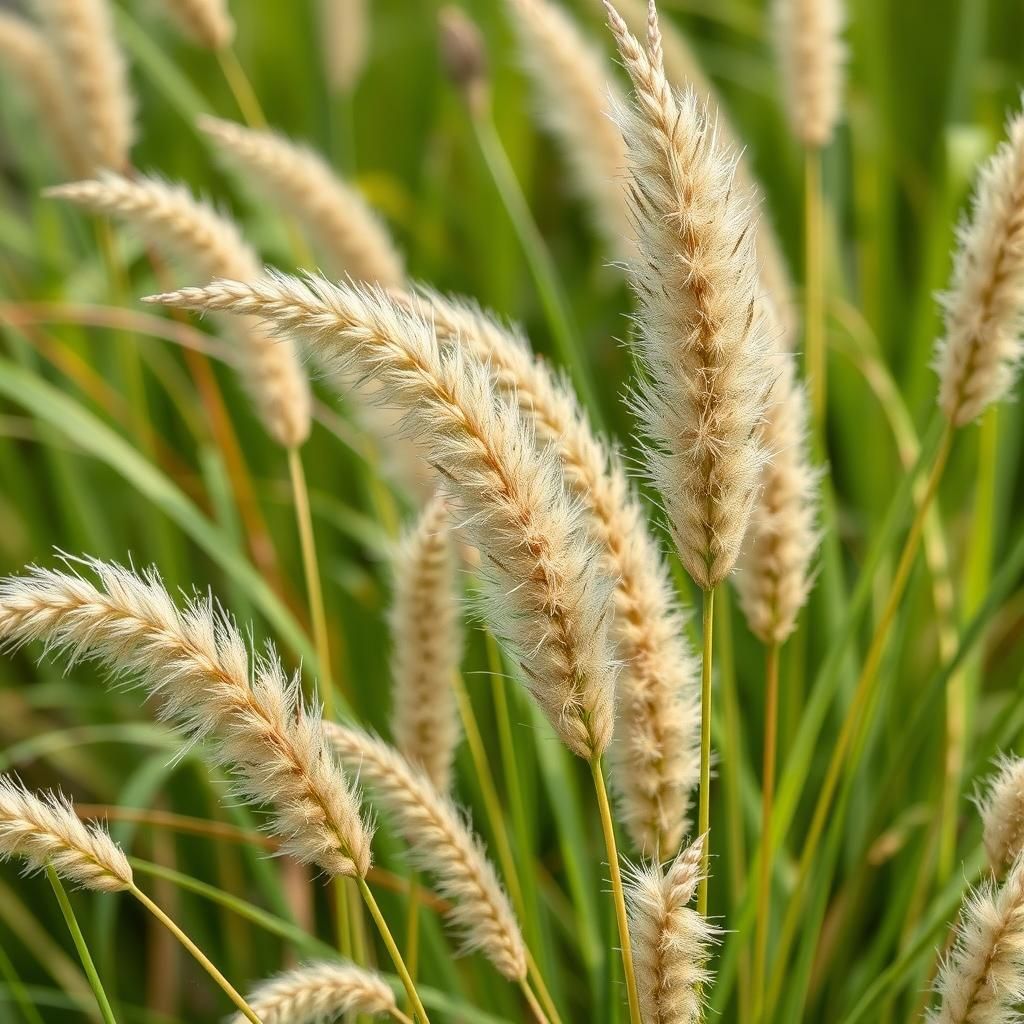Comprehensive Guide to the Australian Native Grasses List: Diverse Varieties for Every Garden

Australia is home to an incredible diversity of native grasses, each offering unique aesthetic and ecological benefits to gardens. This comprehensive guide showcases the rich variety of Australian native grasses, highlighting their distinctive characteristics, growth habits, and ideal growing conditions. From hardy species that thrive in arid landscapes to lush varieties suited for more temperate areas, these grasses can enhance any garden's design while promoting local biodiversity. Whether you're an experienced gardener or just starting out, this guide will help you select the perfect native grasses to create an enchanting and sustainable outdoor space that reflects Australia's unique beauty.
Essential Australian Native Grasses
Australian native grasses play a crucial role in the ecosystem, providing habitat and food for wildlife while also contributing to soil health and erosion control. These grasses are adapted to the diverse climatic and soil conditions of Australia, making them resilient and efficient for landscaping and ecological restoration projects. Among the various species, some are particularly notable for their beauty, low maintenance requirements, and ability to thrive in arid conditions. Collectively, they form a vital component of Australia’s unique flora, supporting biodiversity and promoting sustainable landscaping practices.
1. Kangaroo Grass (Themeda triandra)
Kangaroo Grass is one of the most recognized native grasses in Australia, known for its tall, tufted appearance and distinctive seed heads that resemble a kangaroo’s tail. This grass is highly adaptable and can grow in poor soils, making it ideal for revegetation projects. Its deep root system helps prevent soil erosion and enhances water retention, further promoting its popularity among landscapers and environmentalists alike.
2. Wallaby Grass (Danthonia spp.)
Wallaby Grass comprises several species that are prevalent across Australia, characterized by their fine texture and attractive flowering spikes. These grasses are particularly valued for their drought resistance and ability to thrive in diverse soil types, including sandy and clay soils. Wallaby Grass is also an excellent choice for wildlife gardens, as it provides habitat and food for various insects and small mammals.
3. Rich Grass (Microlaena stipoides)
Rich Grass, often referred to as weeping grass, is a perennial species known for its soft, cascading growth form. This grass is particularly useful for shady areas, as it tolerates low light conditions better than many other native grasses. Its lush appearance and low maintenance needs make it an attractive option for both residential and commercial landscaping.
See also:
4. Poa Grass (Poa spp.)
Poa Grass, which includes several species found throughout Australia, features a clumping habit and is often found in moist environments. These grasses are typically cool-season species, thriving in cooler climates. They are valued in restoration work due to their ability to improve soil health and support biodiversity by providing habitat for birds and insects.
5. Cotton Grass (Eragrostis curvula)
Cotton Grass is a perennial grass known for its soft, fluffy seed heads that resemble cotton. This species is particularly appreciated for its ability to stabilize soils and prevent erosion, especially in riparian zones. Cotton Grass is also drought-tolerant, making it an excellent choice for landscapers looking to promote sustainable gardening practices.
| Grass Type | Key Characteristics | Environmental Benefits |
|---|---|---|
| Kangaroo Grass | Tall, tufted, drought-resistant | Prevent soil erosion, enhance water retention |
| Wallaby Grass | Fine texture, adaptable | Supports wildlife habitats, thrives in diverse soils |
| Rich Grass | Soft, cascading form, tolerant of shade | Ideal for low maintenance gardens |
| Poa Grass | Clumping habit, cool-season | Improves soil health, supports biodiversity |
| Cotton Grass | Fluffy seed heads, stabilizes soil | Drought-tolerant, prevents erosion |
Understanding the Ecological Benefits of Australian Native Grasses
Australian native grasses offer a myriad of ecological benefits that are often overlooked in conventional gardening practices. These grasses are well-adapted to local climates and soils, which means they require less water and fertilizer compared to exotic species. By incorporating native grasses into gardens, we can promote biodiversity, support local wildlife, and help maintain soil health. Moreover, their deep-root systems are effective at preventing erosion and managing stormwater, making them a sustainable choice for both urban and rural landscaping.
Characteristics of Australian Native Grasses
Australian native grasses come in various shapes and sizes, each with distinct characteristics that make them suitable for different landscaping needs. For instance, some species, like Themeda triandra (Kangaroo Grass), exhibit a robust growth pattern, thriving in both dry and wet conditions. Others, such as Microlaena stipoides (Weeping Grass), are excellent ground covers that add texture and aesthetic appeal. The diversity in these grasses allows gardeners to choose the right species that can complement their existing plant communities and enhance the overall design of their gardens.
Choosing the Right Variety for Your Garden
Selecting the right variety of Australian native grasses is crucial for achieving a thriving garden. Gardeners should assess their local environment, including factors like soil type, sunlight exposure, and moisture levels. For sandy soils, species like Austrostipa (Spear Grass) may flourish, while clay-rich areas could benefit from more resilient varieties such as Poa (Tussock Grass). Understanding the specific needs and growing conditions of each grass type will ensure they establish well and contribute positively to the garden's ecosystem.
See also:
Creating a Biodiverse Habitat with Native Grasses
Incorporating Australian native grasses into your garden design can significantly enhance its biodiversity. These grasses provide essential habitats for various wildlife species, including birds, insects, and small mammals. They offer food sources and shelter, encouraging beneficial species to thrive. When combined with native shrubs and trees, native grasses create a complex ecological environment that supports local food webs and promotes overall ecosystem health.
Maintenance Tips for Australian Native Grasses
Maintaining Australian native grasses is generally low-effort compared to traditional grass varieties. Best practices include minimal mowing, which helps preserve their natural growth forms and promotes seed development. Regular weeding is necessary to prevent competition from invasive species. During dry periods, light watering may be beneficial, but it's crucial to avoid overwatering, which can lead to root rot and other moisture-related issues. By following these maintenance tips, gardeners can ensure their native grasses flourish for years to come.
Landscaping Ideas Featuring Native Grasses
Native grasses offer unique landscaping opportunities, enhancing both aesthetics and functionality in gardens. They can be used as attractive border plants, providing a natural transition between garden beds and hardscapes. Grouping different varieties together can create stunning visual effects, particularly when their flowering cycles overlap. Additionally, incorporating ornamental native grasses into rain gardens can help manage stormwater runoff effectively while providing a habitat for beneficial wildlife. Gardeners can experiment with various planting schemes to highlight the beauty and versatility of these eco-friendly plants.
Questions from Our Readers
What are some examples of Australian native grasses?
Australian native grasses include species such as Themeda triandra (Kangaroo Grass), Poa labillardierei (Tussock Grass), and Microlaena stipoides (Weeping Grass). These grasses are well-adapted to various Australian climates and provide important habitat for local wildlife.
Why are Australian native grasses important for the ecosystem?
Australian native grasses play a crucial role in the ecosystem by providing food and habitat for many native animals. They also help improve soil health, reduce erosion, and enhance water retention, contributing to overall biodiversity.
See also:
How do I choose the right native grass for my garden?
When selecting a native grass for your garden, consider factors such as your local climate, soil type, and the specific aesthetic you want to achieve. Researching native grasses like Dichanthium sericeum or Eragrostis australiana can help you find species that are well-suited for your specific environment.
Where can I find Australian native grass seeds?
You can find Australian native grass seeds at local nurseries, specialty garden centers, or online retailers specializing in native plants. It's essential to ensure that the seeds are sourced from local ecosystems to promote ecological sustainability and appropriate growth.

If you want to read more articles like Comprehensive Guide to the Australian Native Grasses List: Diverse Varieties for Every Garden, we recommend you check out our Landscaping category.
Leave a Reply
Related Articles